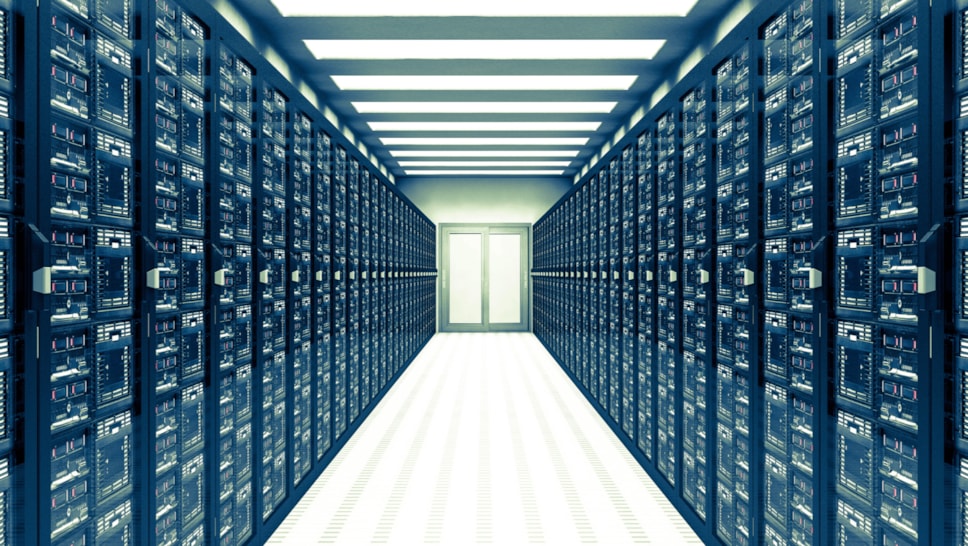
Hot mails: how our inbox clutter is fuelling a bigger problem (and the surprising ways it could keep us warm)
We think of clutter as piles of old receipts or clothes we’ll never wear again. But our worst hoarding habit might just be hidden in plain sight – our inboxes. From unread newsletters to AI queries we never needed, all that digital junk is fuelling data centres that devour energy and pump out heat. But, if we’re smart, they could also help to power a greener future
18,432 emails you’ll will never read again. Old pizza orders. Calendar invites from 2017. A subscription to ‘Weekly Sloth Facts’ you forgot you signed up for.
They sit there quietly, but every one of them has a footprint. Each photo backed up to the cloud, each ’urgent‘ online shopping dispatch notification, each AI prompt you didn’t really need – it all lives somewhere, not in a magical cloud, but in a very real building packed with hot servers.
And those servers don’t come cheap. They run 24/7, consuming electricity on a massive scale and spitting out enormous amounts of heat.
The digital diet problem
Think of a data centre as a fridge the size of a football pitch. We keep cramming in leftovers – unread emails, duplicate files, screenshots we’ll never look at – and someone has to keep that fridge cool.
Data centres already account for around 2.5% of the UK’s total electricity consumption, and this is projected to rise to 6% by 2030. Globally, they use about 1.5% of all electricity, and the surge of AI and cloud computing means that number is only going one way.
One proposed data centre in the UK is predicted to generate five times the emissions of Birmingham Airport. It’s a hungry digital diet – and right now, most of that energy ends up as waste heat.
Waste not, want not
Here’s the odd part: the by-product of our digital lives is heat. Heat that could do something useful – if we choose to harness it.
At the moment, most data centres vent that heat into the air, making already hot (and dry) cities even hotter. It’s a bit like cooking a huge meal, only to throw it straight in the bin.
But we don’t have to waste it. Just as we’ve learned to recycle plastic bottles or repurpose food scraps, we can give digital waste heat a second life.
And that’s what we’re planning for East London’s Silvertown development, where we’re building an innovative heat network powered by our ectogrid™ technology. Instead of discarding the heat from nearby data centres or industrial units, it’ll be captured and redistributed to provide a source of heating and cooling for more than 6,000 homes and businesses in the historic Royal Docks.
Innovation around the world
This isn’t just a London experiment. Across the world, cities are reimagining how to store and reuse digital heat.
- The Dutch water model: In Amsterdam and Rotterdam, the cities are exploring floating data centres that sit directly in canals. Instead of relying on energy-hungry air conditioning, they use the natural coolness of water to regulate server temperatures. Some even run on renewables from nearby solar or wind.
- Barging in: In London, we’re part of a consortium exploring the use of the Thames itself – transporting waste heat up-river in thermal ’batteries’ on river barges. That heat could then feed into central London buildings or a heat network, turning the river into a literal heat highway.
- Decluttering the cloud: It’s not all about new infrastructure. Sometimes the simplest solution is just deleting data we don’t need. At E.ON UK, we recently deleted 65 terabytes of files as part of closing down old servers – that’s the equivalent of more than 16,000 movies. Less storage means less energy wasted on keeping forgotten files cool.
The smarter grid
Capturing waste heat is just one piece of the puzzle. The real opportunity lies in redesigning the systems behind the scenes – from how we connect data centres to heat networks, to how we build the next generation of digital infrastructure.
That’s where our new Independent Distribution Network Operator (IDNO) business comes in: creating flexible, smart grids that make it easier for developers, data centres and renewable projects to plug into the network. It’s like building the roads and pipes for a cleaner, more circular digital economy.
A circular future
Every Netflix binge, every inbox hoard, every AI search adds to the digital appetite. But with the right infrastructure, this doesn’t have to mean waste.
Instead, waste heat from our screens could power the very homes we’re watching them in. Floating data centres could sit quietly in city waterways, cutting cooling costs. And barges on the Thames might carry not just people and goods, but the hidden heat of our digital lives.
So yes, you’ll probably go through your inbox and delete a few old emails (goodbye, Weekly Sloth Facts). But more than that, it’s about seeing the bigger picture – how the things we do every day, even the digital clutter we think is harmless, can have a real impact. And knowing that those same emails and AI prompts could one day help keep a neighbourhood warm? Well, that makes hitting delete feel a little more meaningful.


